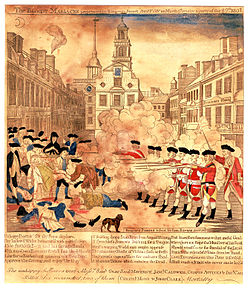 State Street with view of Old State House in 2010 | |
 Interactive map of State Street | |
| Former name(s) | Market Street King Street |
|---|---|
| West end | Court Street |
| Major junctions | Court Street |
| East end | Old Atlantic Avenue |
State Street is one of the oldest and most historic streets in Boston, Massachusetts, United States. Located in the financial district, it is the site of some historic landmarks, such as Long Wharf, the Old State House and the Boston Custom House.








